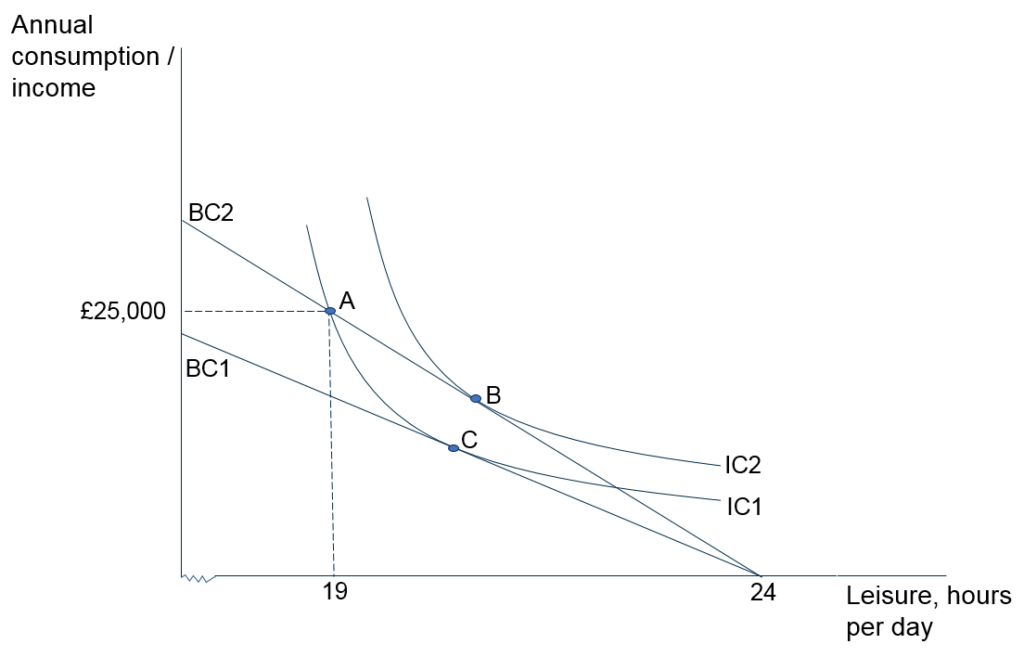A sideways look at economics
With the Christmas and New Year break now but a dim and distant memory, our thoughts turn naturally to the subject of annual leave. Are we getting enough? Or are we getting too much? These questions aren’t as daft as they might seem.
Statutory leave — the minimum amount of paid holiday to which a full-time employee is legally entitled — varies enormously from country to country. With 28 days of statutory leave, including any public holidays observed by the firm, the UK is top of the tree among the major economies. At the bottom sits the US, with no statutory leave at all. Fathom is a generous employer. Until this year, all permanent staff received precisely 33 days of annual leave, with no exceptions. But was that a sensible approach to take?
Economists view decisions about leave as a choice between leisure and consumption. One either works longer hours, in order to consume more by earning more, or one works shorter hours, in order to enjoy more leisure. These choices are represented on the diagram below, familiar to any student of A-level economics. IC1 and IC2 are indifference curves for a prospective employee. They represent combinations of consumption and leisure between which he or she would be indifferent. The prospective employee would be just as happy with the combination of consumption and leisure achieved at point A as they would with the combination of consumption and leisure achieved at point C because each lies on the same indifference curve, IC1. He or she would, of course, be happier still with the combination of consumption and leisure achieved at point B because it lies on a higher indifference curve, IC2.
How does a prospective employee choose how much leave to take? Well, until this year there was no choice at Fathom. With 33 days of annual leave, all our full-time employees worked, on average, around 5 hours each day leaving, on average, around 19 hours each day for leisure. (We rarely asked them to work weekends!) If we offered a new hire a salary of £25,000, they would be at point A on indifference curve IC1. But is that optimal? Is it an efficient outcome? In this case, no.
Imagine instead that our prospective employee is offered a daily rate of pay, and is then allowed to choose how much labour he or she wishes to supply. In these circumstances, our individual is effectively presented with what is known as a budget constraint. A budget constraint represents combinations of consumption and leisure that are open to the prospective employee, given their daily rate of pay. The steeper the budget constraint, the more income is foregone as leisure is increased, and the higher that individual’s rate of pay. Our individual offered employment at point A is effectively on budget constraint BC2. Given preferences over consumption and leisure, point A is inefficient. It is not a ‘tangency solution’. He or she would be far happier moving down BC2, choosing more leisure and less consumption, all the way to point B, where the budget constraint is tangential to the higher indifference curve, IC2.
A generous employer might offer a contract at point B. The employer is paying the same per hour, but the potential employee is happier — and therefore, one might assume, more productive too. There’s another approach, of course. A more frugal employer might observe that they could, in fact, offer a lower rate of pay, represented by the budget constraint BC1. This would lead the prospective employee to choose point C, where they’re just as happy as they are at point A, but they’re less of a burden on the company’s finances.
Economics is all about efficiency. It has very little to say about equity. We know, as economists, that a contract at point A is inefficient. There’s the opportunity either to make the individual better off at no cost to the firm by moving to point B, or to make the firm better off at no cost to the individual by moving to point C. Economics can’t tell you whether B or C is preferable. It can only tell you that both are preferable to A.
Fathom is an enlightened employer. That’s why this week we offered all our permanent, full-time staff the opportunity to choose, within limits, how much leave they’d like to take, keeping their daily rate of pay unchanged. The results are now in, and the most popular choice was to keep to 33 days. A few people chose to sell back leave, and a few chose to buy more, with the net result that, on average, each person chose to work an additional one quarter of a day. That’s reassuring, and suggests that our previous more rigid leave policy was about right, on average.
